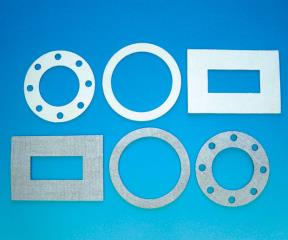Q. Which gasket should I use for the exhaust heat duct?
A. We usually recommend the VALQUATEX Gasket (N314 and N214), but some leakage will occur. If you require sealability, please coat a gasket paste on the metal jacketed gasket.
Q. I want to control the width of the opening in the flange such as with a sheet gasket. How should I do this?
A. Control with width of the opening in the flange is prone to cause a margin of error and an accurate tightening stress cannot be obtained. It is effective for uneven tightening, so please use it in conjunction with control of tightening torque.
Q. Please tell me about the difference in the gasket dimensions between flanges of the JPI and ASME/ANSI standards.
A. JPI basically quotes from ASME/ANSI, so there are cases in which the dimensions differ slightly due to rounding error during the millimeter conversion of the original number. We understand that, in actual use, the function of the gasket is fulfilled to an equivalent degree by both dimensions.
Q. Why does leakage occur during stop or re-operation even though there are no problems during plant operation?
A. Expansion and contraction of the flange, bolt, pipe and the like will occur due to temperature changes. As a result, a tendency of reduced tightening force in the gasket main unit is often observed when the temperature decreases (including low temperature at the time of initial re-operation), and leakage occurs due to relaxation. We therefore generally recommend a retightening of the gasket before re-operation after the first heat addition.
Q. Is retightening effective when leakage occurs?
A. Yes, it is effective. We ask that retightening during leakage be performed after relieving internal pressure. However, there are also points to keep in mind for each product, such as the possibility of damage as a result of temperature-induced hardening in the case of a compressed non-asbestos fiber sheet.




